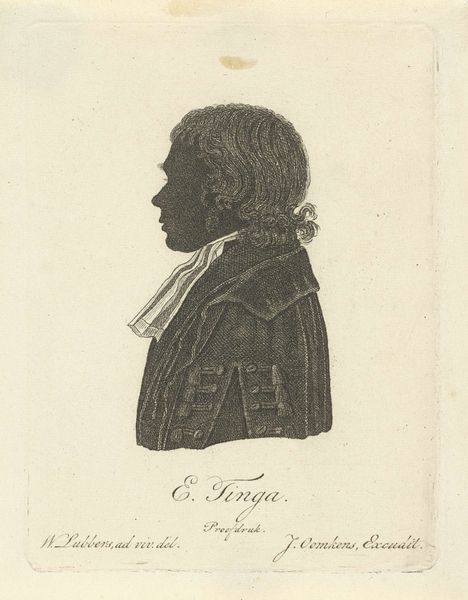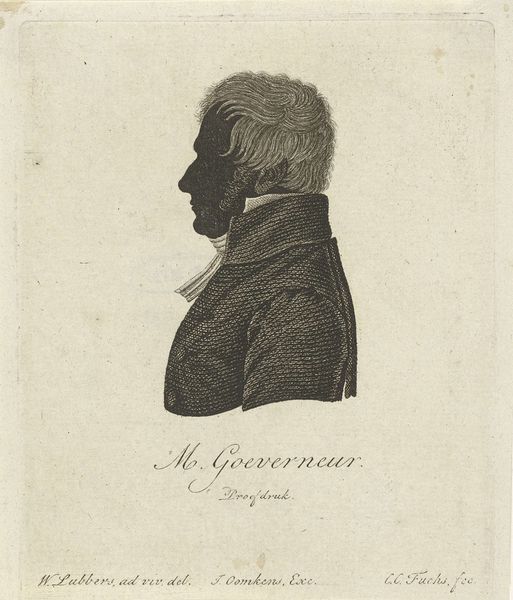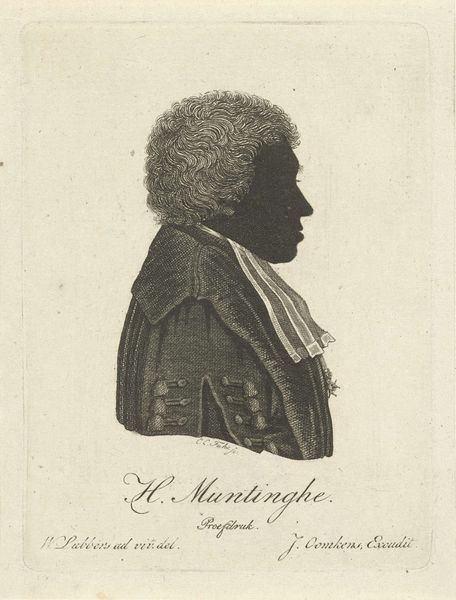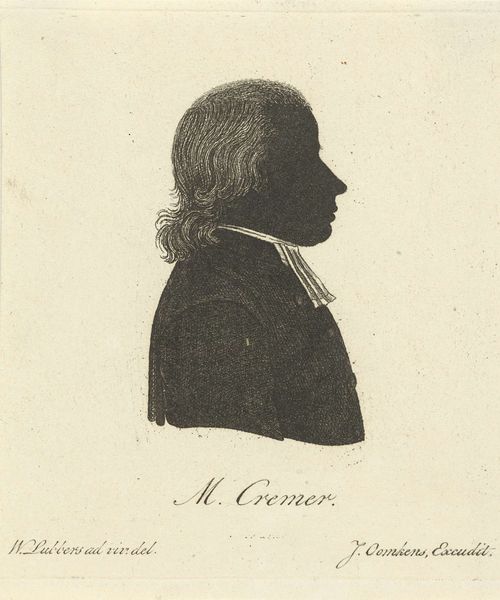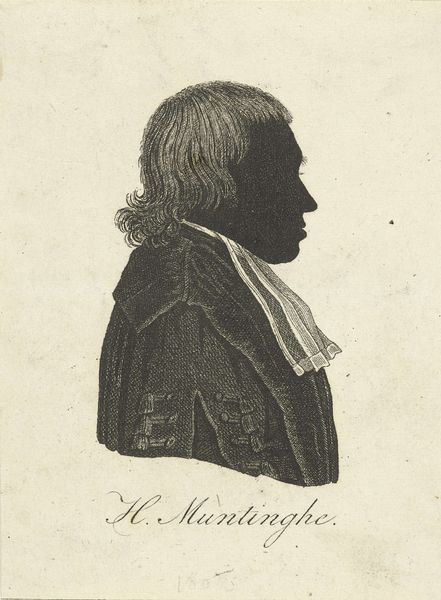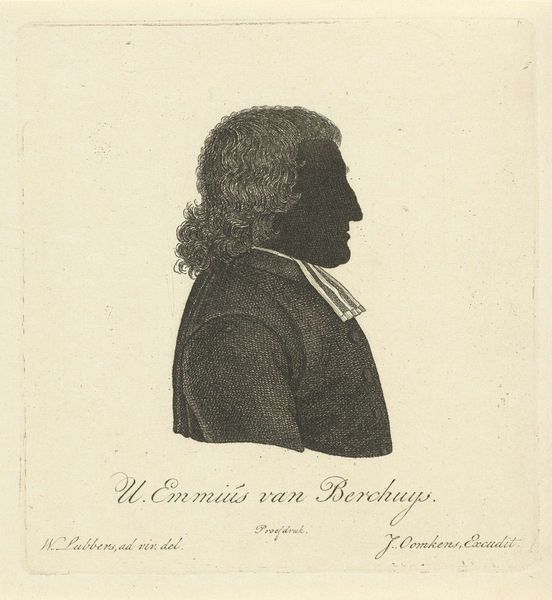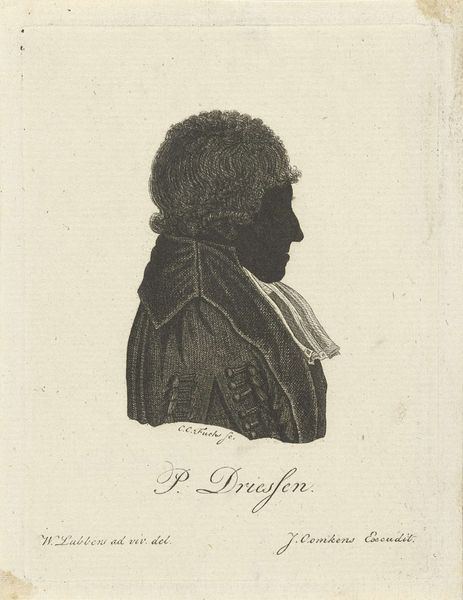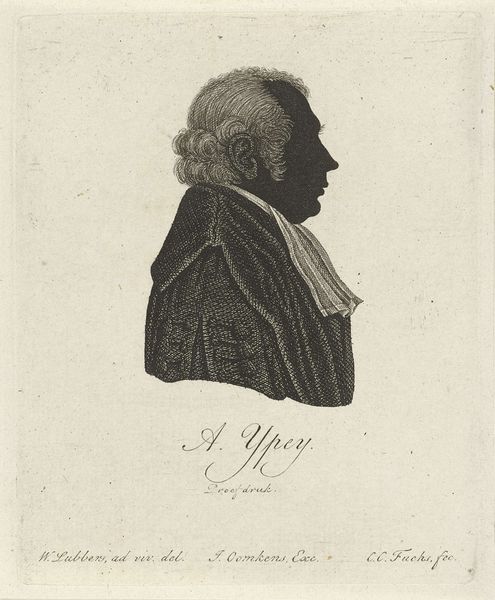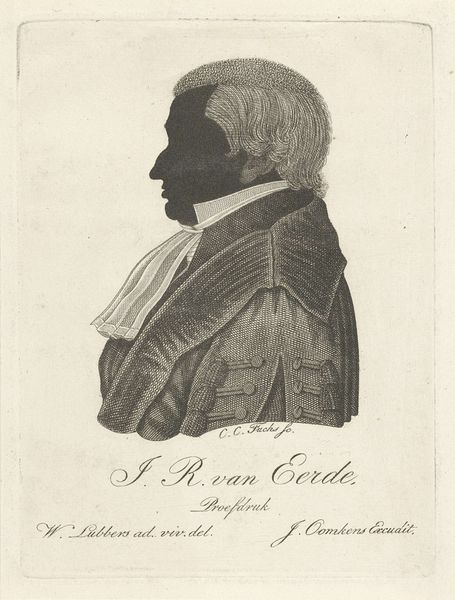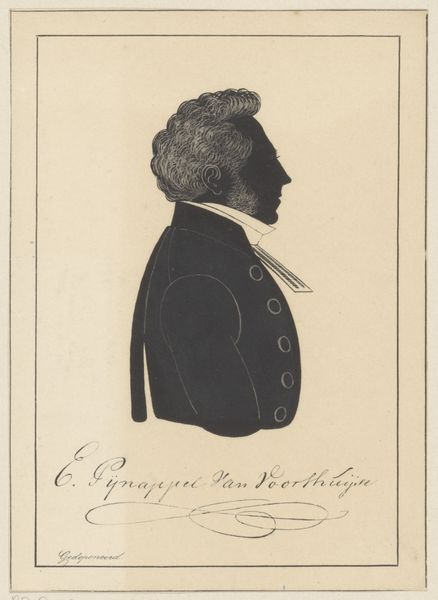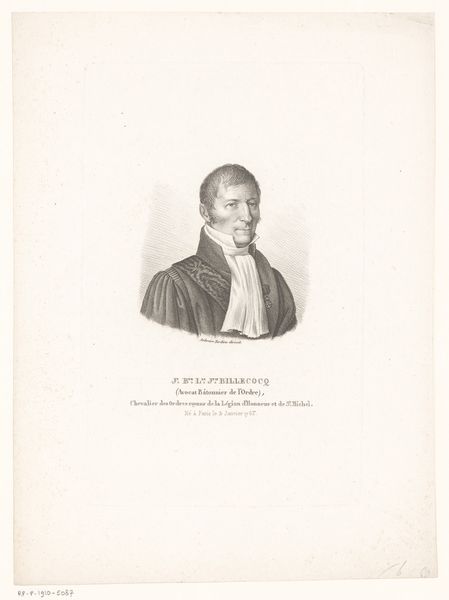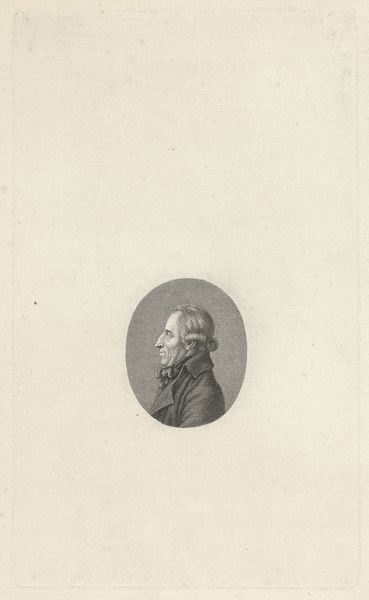
engraving
#
portrait
#
neoclassicism
#
old engraving style
#
line
#
academic-art
#
engraving
Dimensions: height 109 mm, width 83 mm
Copyright: Rijks Museum: Open Domain
Curator: This piece, currently housed in the Rijksmuseum, is a silhouette portrait of Adriaan Gilles Camper, created in 1814. It’s an engraving—note the crispness of the lines. Editor: My first thought is restraint. There’s a stoic stillness, a certain intellectual weight. The dark silhouette against the paper conveys power simply. Curator: Yes, the power of negative space is utilized effectively here. Silhouette portraits were quite popular in the late 18th and early 19th centuries as a more affordable alternative to painted portraits. They offered a sense of immediate recognition. Notice the sitter’s meticulously rendered coat and cravat, how his status is materially present through clothing. Editor: Engravings allowed for broader distribution of images, a democratization of portraiture in a way. But I also see the labor involved: the precision required to create such fine lines with a burin. Curator: Absolutely. The linear style and emphasis on form align with the Neoclassical revival, referencing the clarity and order of classical art. In this profile we can see the emergence of the scientific paradigm focused on observable attributes and categories. Do you agree? Editor: I do, and while silhouette might appear to simply flatten detail, observe how the engraver distinguishes between surface textures like the rough curly hair against the smoother fabric, elevating what may seem to be a simple dark mass. These details must take considerable skill and time. Curator: Indeed. And the profile itself – the nose, the line of the jaw – speaks to a particular understanding of physiognomy prevalent at the time. It becomes more than just a likeness, but a claim about character. What stories can an economic format and style provide to future viewers of status? Editor: Seeing this reminds me of the long process behind making a seemingly straightforward image: the mining of the metals for tools, the preparation of the plate, the press printing numerous examples from the laboriously engraved line. It's about accessing people through reproducibility and social distribution of affordable goods. Curator: Fascinating to consider how this seemingly simple portrait, born from specific material conditions, conveys layers of symbolic meaning. Editor: Absolutely, highlighting both accessibility through its medium and the artistry hidden within those clean lines.
Comments
No comments
Be the first to comment and join the conversation on the ultimate creative platform.
